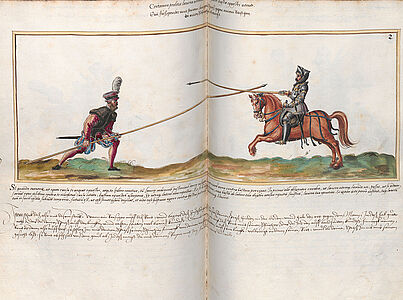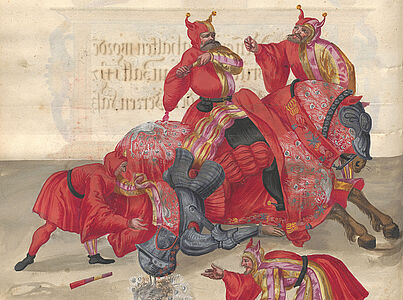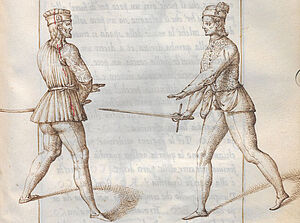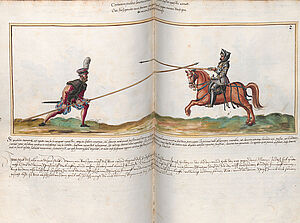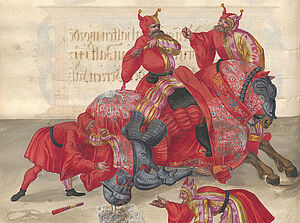You decide, we display!
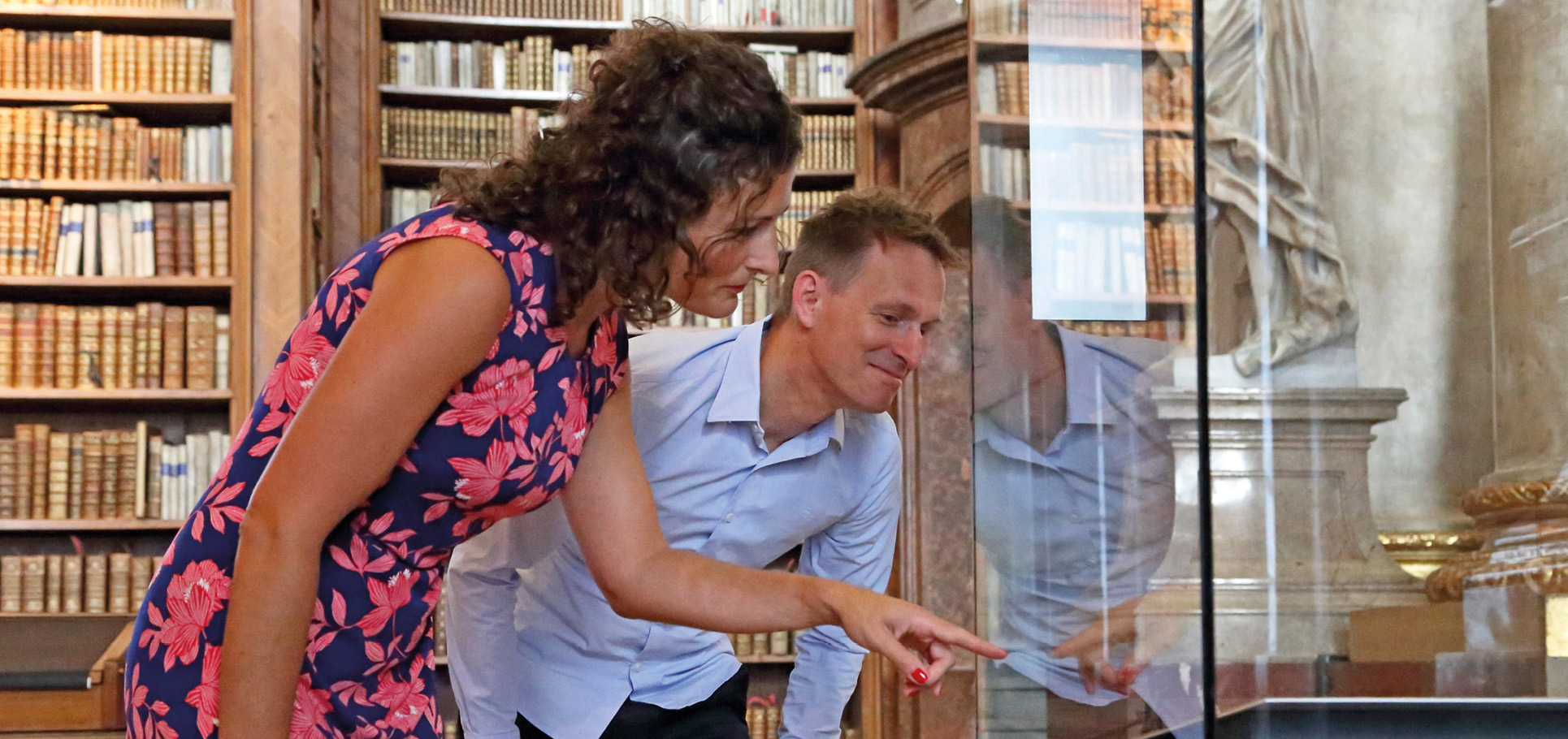
Which "Special Exhibit" would you like to see at a presentation? Vote now! In this round three extraordinary objects from the Department of Manuscripts and Rare Books are available. You can vote until 30 May. The winning object will be displayed in a presentation on 29 September at the Austrian National Library.
Martial Arts
Historical depictions of fencing and tournament
Images of armed knights facing each other in duels are firmly linked to our conception of the Middle Ages. A significant role in this was played by the courtly culture of the early modern period, which continued to cultivate old fighting methods and used them for its own self-dramatisation in duels and festive tournaments. The Austrian National Library’s Department of Manuscripts an Rare Books invites you on a journey into the past with historical depictions of combat.
Your vote counts!
You decide: Vote here for your favourite object!
Only one vote per IP address possible.
Object 1: Trattato d'uno schermo di spada
Manuscript, 1567
In 1551, the fencing master Angelo Viggiani dal Montone from Bologna wrote a fencing book dedicated to the future Emperor Maximilian II. However, due to the author’s sudden death, the work did not reach its addressee. Sixteen years later, his brother Battista had the present copy made for the now sovereign Maximilian II. It is partly written in gold ink on parchment, illustrated with fine Mannerist pen drawings and explains the art of fencing with the side sword in the form of a dialogue between an imperial captain and a philosopher. The work was finally printed for the first time in Venice in 1575, and a second edition was published in Bologna in 1588.
Object 2: De arte athletica / Fencing book
Manuscript, after 154
Towards the middle of the 16th century, the Augsburg town clerk and treasurer Paul Hector Mair, a passionate collector of old weapons, armour and fencing books, decided to write an outstanding work on the art of fencing. He hired two fencing masters to examine and refine the techniques handed down in the compiled sources and at the same time to serve as models for the hired illustrators. In this way, a richly illustrated two-volume fencing and tournament book was produced, the German-Latin version of which is owned by the Austrian National Library. Mair covered the large financial outlay he made for this and for his collections by, among other things, embezzling money from the city treasury, which ultimately brought him to an inglorious end.
Object 3: The Tournament Book of Emperor Maximilian I.
Manuscript, 1550 - 1560
The famous "Last Knight" is remembered in the so-called Tournament Book of Emperor Maximilian I, who claimed not only to have renewed the tournament in Germany, but to have invented it in the first place. Long attributed to the 16th century, but actually written in Augsburg in the early 17th century, the book is probably based on older originals that are likely to have come from the Emperor’s surroundings. It contains, among other things, pictures of the entry to the tournament and of various techniques of duelling on horseback. Particularly remarkable are the numerous depictions of armour, which are shown both on the wearer and disassembled in their individual parts, thus resembling cut-out sheets for dress-up dolls.


